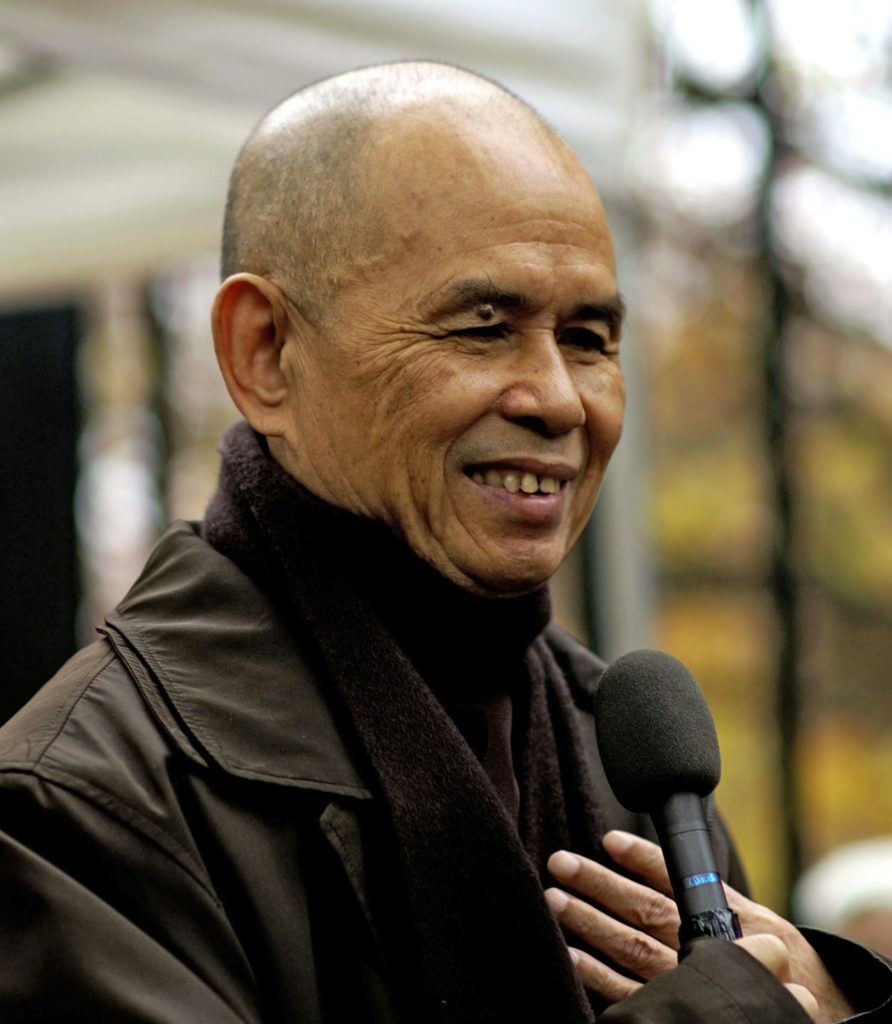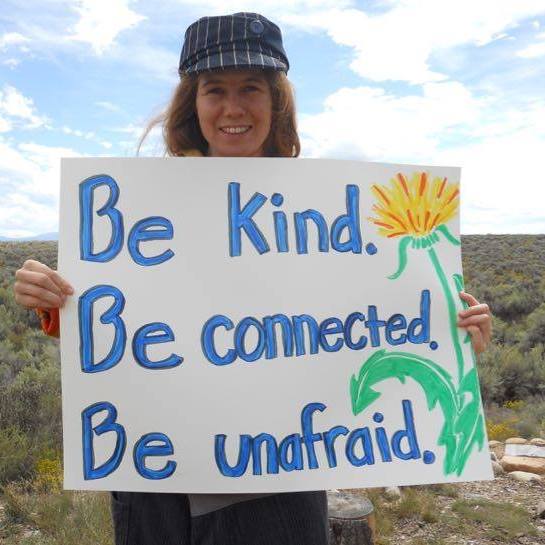
Vietnamese Buddhist monk Thich Nhat Hanh was born on October 11th, 1926 in central Vietnam. He became a novice monk at the age of sixteen. In the early 1950s, he got involved in the movement to renew Vietnamese Buddhism. He broke new territory in many ways, including by being one of the first monks to study a secular subject at the university in Saigon, and by being one of the first six monks to ride a bicycle. These, however, are the least of his many remarkable accomplishments.
At the outset of the Vietnamese War, Buddhist monks and nuns had to decide whether to continue to adhere to the contemplative life and remain in meditation in the monasteries, or to move into engaged efforts to try to alleviate the suffering of the people during the bombings and turmoil of war. Thich Nhat Hanh and many of his contemporaries chose to practice peace in the midst of the horrors and provide relief, aid, and assistance to those harmed by the war. In doing so, he founded the Engaged Buddhism movement, a term which was coined in his book Vietnam: Lotus in a Sea of Fire.
In 1966, he made his second journey to the U.S. and Europe to promote peace and to call for an end of the war in Vietnam. During this trip, he met Dr. Martin Luther King Jr., who nominated him for the Nobel Peace Prize in 1967. It was after this meeting that Dr. King publicly denounced the Vietnam War. As a result of Thich Nhat Hanh’s efforts toward peace, both North and South Vietnam denied him the right to return to Vietnam, and he began a 39 year-long exile that lasted until 2005. Thomas Merton, whom Thich Nhat Hanh had met at Gethsemani Abbey, penned an essay of solidarity opposing the exile sentence entitled, “Nhat Hanh is my Brother”.
In his 1967 Nobel Peace Prize nomination of Thich Nhat Hanh, Dr. King said, “I do not personally know of anyone more worthy of this prize than this gentle monk from Vietnam. His ideas for peace, if applied, would build a monument to ecumenism, to world brotherhood, to humanity.” The Nobel Prize Committee, however, chose not to award a prize that year.
Thich Nhat Hanh has been a pioneer in bringing Buddhism to the West. He founded six monasteries and many practice centers, as well as more than a thousand mindfulness communities. His website says, “His key teaching is that, through mindfulness, we can learn to live happily in the present moment—the only way to truly develop peace, both in one’s self and in the world.”
Thich Nhat Hanh is now over ninety years old and beloved throughout the world. His life is an ongoing testimony to peace and to the power of active nonviolence.
Learn more here:
Photo Credit: Thich Nhat Hanh in Paris, 2006 By Duc (pixiduc) from Paris, France. – Thich Nhat Hanh Marche meditative 06, CC BY-SA 2.0, https://commons.wikimedia.org/w/index.php?curid=19478461
This article is from Rivera Sun’s book of nonviolent histories that have made our world. Click here for more information.
______________________________________

Rivera Sun is a change-maker, a cultural creative, a protest novelist, and an advocate for nonviolence and social justice. She’s a love-based revolutionary and the author of The Dandelion Insurrection, The Way Between and ten other fiction, non-fiction and poetry books. Her essays and writings are syndicated by Peace Voice, and have appeared in over a hundred journals nationwide. Rivera Sun speaks and facilitates workshops in strategy for nonviolent change across the country and around the world. She connects the dots between the issues, shares solutionary ideas, and inspires people to step up to the challenge of being a part of the story of change in our times. www.riverasun.com